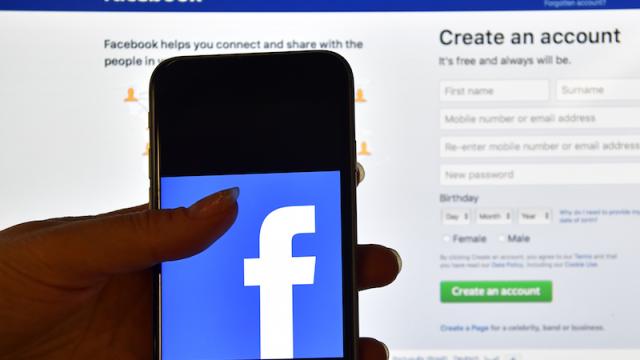Your Facebook News Feed is about to change, yet again, and it’s because the social media giant wants you to be better informed.
Image: Carl Court/Getty Images
Facebook announced Wednesday that it is rolling out a new update over coming months to ensure users stop seeing posts and ads on their News Feed linking out to “low-quality web experiences”. A low-quality website is subjective, but Facebook has set a clear definition for this purpose: It’s “misleading, sensational and spammy” pages “containing little substantive content” or are littered with ads. “This way people can see fewer misleading posts and more informative posts,” writes Facebook.
[referenced url=”https://www.lifehacker.com.au/2016/08/whatsapp-and-facebook-now-share-data-for-ad-targeting-heres-how-to-opt-out/” thumb=”https://i.kinja-img.com/gawker-media/image/upload/t_ku-large/rijft2i3v6ejn3xl8y46.jpg” title=”WhatsApp And Facebook Now Share Data For Ad Targeting, Here’s How To Opt Out” excerpt=”Facebook and WhatsApp announced a new data sharing plan that will improve targeted advertising and friend suggestions. If you’re not a fan of the idea of Facebook and WhatsApp cozying up so closely together, it’s easy to opt out.”]
‘Disruptive, shocking or malicious’
The company says it reviewed hundreds of thousands of web pages that are linked from the platform to evaluate which content has little substance or has an abundance of “disruptive, shocking or malicious” ads. They then used artificial intelligence to spot similar pages on the platform.
Once identified to be a low-quality web page, the new News Feed algorithm places the page lower in a user’s feed and disqualifies it from being an ad. It’s essentially a ranking system that creates a hierarchy based on a web page’s quality, sparing users from being bombarded with obnoxious or NSFW ads the moment they head over.
They have done this before.
Sound familiar? That’s because Facebook has used this tactic before to tackle clickbait. Last year, the company announced it had analysed thousands of article headlines to determine whether or not they were clickbait (Think: “How To Lose 43kg In Less Than One Week”). Using this data, they developed a software algorithm that effectively scores web domains and pages on their clickbait violations, and this score determines their status in a News Feed — much like the new algorithm.
“This is one of the first times we’re actually using information from the experience that people will have once they click something to help inform the ranking in News Feed,” product manager Greg Marra told Recode
But how will it affect fake news?
One practical result of this change is how it will affect the prevalence of “fake news” on the social networking site. It’s no secret that Facebook has a fake news problem — the issue was spotlighted amid the 2016 US presidential election. While Facebook CEO Mark Zuckerberg denied allegations — he claimed 99 per cent of content on the platform is real — our sister site Gizmodo reported the company was aware of the problem and even had access to a tool that could block false content.
[referenced url=”https://www.lifehacker.com.au/2016/12/facebook-is-rolling-out-tools-to-report-fake-news-and-hoaxes/” thumb=”https://i.vimeocdn.com/video/608052468_640.jpg” title=”Facebook Is Rolling Out Tools To Report Fake News And Hoaxes” excerpt=”Fake news has been a big talking point the last few weeks, and today, Facebook’s finally rolling out tools to help you report fake news so that it doesn’t continue to spread.”]
In the aftermath of the criticism and accusations, the company banned fake news sites from using the in-house ad network. Facebook also created a new, easier method for taking down false news posts: Users can easily report a fake story by clicking on the upper right corner of the post and when enough reports are made, a third-party fact-checker evaluates the link to determine its authenticity.
Now, with the new AI algorithm update, the Facebook is taking another stab at fake news sites from a different angle. Since many of the sites dishing inaccurate information are also low-quality websites, they are at risk of being lowly ranked. And, as TechCrunch notes, the creators behind false news are largely driven by financial incentives and fill their content in ads.
Just remember: Facebook is making it less likely you’ll encounter fake content; they’re not eliminating it.

Comments